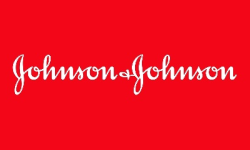
Global Insect Protein Market by Product (Orthoptera, Hymenoptera, Coleoptera, Hemiptera, Lepidoptera), by Application (Food & Beverages, Personal Care & Cosmetics) and Region (North America, Latin America, Europe, Asia Pacific and Middle East & Africa), Forecast To 2028
Industry Insights
In 2018, the global insect protein market was valued at USD 210.7million. It is expected to grow at a revenue-based rate of 25.1% over the forecast period. This is due to rising concerns about sustainability and greater private and public support for new protein sources in both developed and developing economies.
Insect protein can be obtained either directly from the insect itself or by processing it. The protein in insects such as mealworms and black soldier flies, grasshoppers and ants is high, so it can be easily obtained in areas with limited resources. These insects are an integral part of traditional food in over 110 countries, with a majority concentrated in Southeast Asia.
Edible insects are rich in protein, energy, and fat and can provide significant sources of vitamins and minerals. They can be used as a sustainable source of protein in food and feed. They can help ensure food security and food safety. They are a great alternative to conventional food systems and offer a sustainable option for the future. These advantages are expected to be a boon for future demand.
Insects are used for their high feed conversion efficiency. For example, to gain approximately 1 kg of bodyweight, crickets require 2 kg of food. Other omnivorous insects, such as crickets, are often raised on organic waste. Insects are more efficient than cattle and pigs in terms of feeding conversion. These factors encourage potential protein ingredient producers to tap into the insect protein market.
European insect protein producers are a major market in animal nutrition. The product's high palatability, digestibility, and versatility make it a great choice for pets, such as cats and dogs. Many European pet food companies incorporate insects in their feed formulas, especially to diversify their product line. Hypoallergenic products. This trend is expected continue to grow over the next few years, boosting the overall market.
Application Insights
The market for insect protein can be divided by application into food and beverage, personal care, cosmetics and animal nutrition. In order to meet the growing demand for protein alternatives, food and beverage manufacturers have been increasing the use of insect-based proteins in many food and beverage applications such as snacks, bakery, dietary supplements, or snack foods.
The market is expected to grow due to rising demand for insect-based ingredient in the animal nutrition segment. Due to increasing awareness about the many benefits of insect-based ingredients in maintaining pet health, cat and dog food are increasingly being used around the globe.
Vegetarian cat owners are increasingly attracted to insects protein as it is more nutritious than meat and fish. However, pet food made from insects is more expensive than other budget meals. This will likely reduce the demand for insect protein in the animal nutrition segment during the forecast period.
Product Insights
The insect protein market can be divided by product into Coleoptera and Lepidoptera and Hymenoptera. Orthoptera and Hemiptera are also segments. Coleoptera is an insect order that includes beetles, weevils and other insects. This is the largest group of insects, representing approximately 40% of all species. Due to their high protein content, edible beetles were traditionally eaten in many countries. Holotrichia paralela Motschulsky, a Chinese edible beetle, is a species that has been consumed traditionally for its high nutritional content. Although live insects from these species have been consumed for centuries, extracting proteins from them is a relatively new idea.
The Coleoptera order includes mealworms. In particular, the larval form, mealworm beetle, is one of the most popular species for extracting protein. Mealworms are used to extract powders for animal feed and pet food industries. The market is expected to grow with the rising demand for mealworm ingredient in these end-use markets. YNSECT, a French-based insect product manufacturing company, has just launched its fourth round of funding to build a new facility in France and expand its operations in North America, Europe, and North America. The company provides mealworm-based ingredients to both livestock and pets. These initiatives will likely strengthen the Coleoptera sector in the near future.
Regional Insights
Europe held the largest market share for 2018 and will continue to lead the way over the forecast period. As the region is a major market for insect protein, it is also one of the most important ingredients used in food applications in Europe's middle- and older-age population. In the region, insect protein is primarily used as a nutritional and dietary supplement. The European beverage market has yet to reach its full potential. Market growth will be positive due to increased demand for insect protein in major markets like Germany and the U.K., but at a slower pace because of the maturity of industries.
The food industry has increased its R&D efforts in North America to develop products that promote mental well-being and health. Despite uncertainties in existing regulations, this highlights the context for a rapidly growing market in major countries like the U.S. and Mexico. Due to changes in food regulations and growing self-care movements, the market for insect protein will also grow. There is overwhelming scientific evidence that demonstrates the crucial link between diet and health.
Insect Protein Market Share Insights
With many small- and large-scale producers in Canada, the U.S., France, Denmark and other countries, the market is highly concentrated and competitive. There are many business strategies that major players employ, including mergers, acquisitions and capital expansion. The major players are focused on increasing their market share and productivity by technological innovation. Aspire Food Group Protifarm and EntomoFarms are key market players.
Report Scope
|
Attribute |
More Details |
|
Base year for estimation |
2018 |
|
Actual estimates/Historical data |
2014 - 2017 |
|
Forecast period |
2019 - 2025 |
|
Representation of the market |
Volume in Tons, Revenues in USD Thousand and CAGR between 2019-2025 |
|
Regional scope |
North America, Europe and Asia Pacific, Central & South America. Middle East & Africa. |
|
Report coverage |
Forecast revenue, company share, competitive landscape and growth factors and trends |
|
Country Scope |
U.S., Canada, Mexico, U.K., Germany, France, China, India, Japan, Brazil, UAE |
|
15% off customization scope (equivalent of 5 analyst working days). |
We will customize the report to provide you with any additional information that you require. |
The Report Covers Certain Segments
This report forecasts volume and revenue growth at the global, regional and country level. It also provides analysis of industry trends for each sub-segment from 2014-2025. Grand View Research divided the global insect protein market report by product, region, and application.
-
Product Outlook (Volume and Tons; Revenue USD Thousand, 2014-2025)
-
Coleoptera
-
Lepidoptera
-
Hymenoptera
-
Orthoptera
-
Hemiptera
-
Diptera
-
Other
-
-
Application Outlook (Volume and Tons; Revenue USD Thousand, 2014-2025)
-
Food & Beverages
-
Animal Nutrition
-
Personal Care & Cosmetics
-
Other
-
-
Regional Outlook (Volume and Tons; Revenue USD Thousand, 2014-2025)
-
North America
-
The U.S.
-
Canada
-
Mexico
-
-
Europe
-
Germany
-
U.K.
-
France
-
-
Asia Pacific
-
China
-
India
-
Japan
-
-
Central & South America
-
Brazil
-
-
Middle East & Africa
-
UAE
-
-
Up Market Research published a new report titled “Insect Protein Market research report which is segmented by Product (Orthoptera, Hymenoptera, Coleoptera, Hemiptera, Lepidoptera), by Application (Food & Beverages, Personal Care & Cosmetics), By Players/Companies Orthoptera, Product Outlook (Volume Tons; Revenue USD Thousand 2014 - 2025)ColeopteraLepidopteraHymenopteraOrthopteraHemipteraDipteraOthers, Coleoptera, Hemiptera, Others, Lepidoptera, Diptera, Hymenoptera”. As per the study the market is expected to grow at a CAGR of XX% in the forecast period.
Report Scope
| Report Attributes | Report Details |
| Report Title | Insect Protein Market Research Report |
| By Product | Orthoptera, Hymenoptera, Coleoptera, Hemiptera, Lepidoptera |
| By Application | Food & Beverages, Personal Care & Cosmetics |
| By Companies | Orthoptera, Product Outlook (Volume Tons; Revenue USD Thousand 2014 - 2025)ColeopteraLepidopteraHymenopteraOrthopteraHemipteraDipteraOthers, Coleoptera, Hemiptera, Others, Lepidoptera, Diptera, Hymenoptera |
| Regions Covered | North America, Europe, APAC, Latin America, MEA |
| Base Year | 2020 |
| Historical Year | 2018 to 2019 (Data from 2010 can be provided as per availability) |
| Forecast Year | 2028 |
| Number of Pages | 200 |
| Number of Tables & Figures | 140 |
| Customization Available | Yes, the report can be customized as per your need. |
The report covers comprehensive data on emerging trends, market drivers, growth opportunities, and restraints that can change the market dynamics of the industry. It provides an in-depth analysis of the market segments which include products, applications, and competitor analysis.

Global Insect Protein Market Report Segments:
The market is segmented by Product (Orthoptera, Hymenoptera, Coleoptera, Hemiptera, Lepidoptera), by Application (Food & Beverages, Personal Care & Cosmetics).
Insect Protein Market research report delivers a close watch on leading competitors with strategic analysis, micro and macro market trend and scenarios, pricing analysis and a holistic overview of the market situations in the forecast period. It is a professional and a detailed report focusing on primary and secondary drivers, market share, leading segments and geographical analysis. Further, key players, major collaborations, merger & acquisitions along with trending innovation and business policies are reviewed in the report.
Key Benefits for Industry Participants & Stakeholders:
- Industry drivers, restraints, and opportunities covered in the study
- Neutral perspective on the market performance
- Recent industry trends and developments
- Competitive landscape & strategies of key players
- Potential & niche segments and regions exhibiting promising growth covered
- Historical, current, and projected market size, in terms of value
- In-depth analysis of the Insect Protein Market
Overview of the regional outlook of the Insect Protein Market:
Based on region, the market is segmented into North America, Europe, Asia Pacific, Latin America and Middle East & Africa (MEA). North America region is further bifurcated into countries such as U.S., and Canada. The Europe region is further categorized into U.K., France, Germany, Italy, Spain, Russia, and Rest of Europe. Asia Pacific is further segmented into China, Japan, South Korea, India, Australia, South East Asia, and Rest of Asia Pacific. Latin America region is further segmented into Brazil, Mexico, and Rest of Latin America, and the MEA region is further divided into GCC, Turkey, South Africa, and Rest of MEA.

Highlights of The Insect Protein Market Report:
- The market structure and projections for the coming years.
- Drivers, restraints, opportunities, and current trends of Insect Protein Market.
- Historical data and forecast.
- Estimations for the forecast period 2028.
- Developments and trends in the market.
1. Orthoptera
2. Hymenoptera
3. Coleoptera
4. Hemiptera
5. Lepidoptera
7. By Application:1. Food & Beverages
2. Personal Care & Cosmetics
- Market scenario by region, sub-region, and country.
- Market share of the market players, company profiles, product specifications, SWOT analysis, and competitive landscape.
- Analysis regarding upstream raw materials, downstream demand, and current market dynamics.
- Government Policies, Macro & Micro economic factors are also included in the report.
We have studied the Insect Protein Market in 360 degrees via. both primary & secondary research methodologies. This helped us in building an understanding of the current market dynamics, supply-demand gap, pricing trends, product preferences, consumer patterns & so on. The findings were further validated through primary research with industry experts & opinion leaders across countries. The data is further compiled & validated through various market estimation & data validation methodologies. Further, we also have our in-house data forecasting model to predict market growth up to 2028.
How you may use our products:
- Correctly Positioning New Products
- Market Entry Strategies
- Business Expansion Strategies
- Consumer Insights
- Understanding Competition Scenario
- Product & Brand Management
- Channel & Customer Management
- Identifying Appropriate Advertising Appeals

Reasons to Purchase the Insect Protein Market Report:
- The report includes a plethora of information such as market dynamics scenario and opportunities during the forecast period
- Segments and sub-segments include quantitative, qualitative, value (USD Million,) and volume (Units Million) data.
- Regional, sub-regional, and country level data includes the demand and supply forces along with their influence on the market.
- The competitive landscape comprises share of key players, new developments, and strategies in the last three years.
- Comprehensive companies offering products, relevant financial information, recent developments, SWOT analysis, and strategies by these players.
Chapter 2 Assumptions and Acronyms Used
Chapter 3 Research Methodology
Chapter 4 Insect Protein Market Overview
4.1 Introduction
4.1.1 Market Taxonomy
4.1.2 Market Definition
4.1.3 Macro-Economic Factors Impacting the Market Growth
4.2 Insect Protein Market Dynamics
4.2.1 Market Drivers
4.2.2 Market Restraints
4.2.3 Market Opportunity
4.3 Insect Protein Market - Supply Chain Analysis
4.3.1 List of Key Suppliers
4.3.2 List of Key Distributors
4.3.3 List of Key Consumers
4.4 Key Forces Shaping the Insect Protein Market
4.4.1 Bargaining Power of Suppliers
4.4.2 Bargaining Power of Buyers
4.4.3 Threat of Substitution
4.4.4 Threat of New Entrants
4.4.5 Competitive Rivalry
4.5 Global Insect Protein Market Size & Forecast, 2018-2028
4.5.1 Insect Protein Market Size and Y-o-Y Growth
4.5.2 Insect Protein Market Absolute $ Opportunity
Chapter 5 Global Insect Protein Market Analysis and Forecast by Product
5.1 Introduction
5.1.1 Key Market Trends & Growth Opportunities by Product
5.1.2 Basis Point Share (BPS) Analysis by Product
5.1.3 Absolute $ Opportunity Assessment by Product
5.2 Insect Protein Market Size Forecast by Product
5.2.1 Orthoptera
5.2.2 Hymenoptera
5.2.3 Coleoptera
5.2.4 Hemiptera
5.2.5 Lepidoptera
5.3 Market Attractiveness Analysis by Product
Chapter 6 Global Insect Protein Market Analysis and Forecast by Application
6.1 Introduction
6.1.1 Key Market Trends & Growth Opportunities by Application
6.1.2 Basis Point Share (BPS) Analysis by Application
6.1.3 Absolute $ Opportunity Assessment by Application
6.2 Insect Protein Market Size Forecast by Application
6.2.1 Food & Beverages
6.2.2 Personal Care & Cosmetics
6.3 Market Attractiveness Analysis by Application
Chapter 7 Global Insect Protein Market Analysis and Forecast by Region
7.1 Introduction
7.1.1 Key Market Trends & Growth Opportunities by Region
7.1.2 Basis Point Share (BPS) Analysis by Region
7.1.3 Absolute $ Opportunity Assessment by Region
7.2 Insect Protein Market Size Forecast by Region
7.2.1 North America
7.2.2 Europe
7.2.3 Asia Pacific
7.2.4 Latin America
7.2.5 Middle East & Africa (MEA)
7.3 Market Attractiveness Analysis by Region
Chapter 8 Coronavirus Disease (COVID-19) Impact
8.1 Introduction
8.2 Current & Future Impact Analysis
8.3 Economic Impact Analysis
8.4 Government Policies
8.5 Investment Scenario
Chapter 9 North America Insect Protein Analysis and Forecast
9.1 Introduction
9.2 North America Insect Protein Market Size Forecast by Country
9.2.1 U.S.
9.2.2 Canada
9.3 Basis Point Share (BPS) Analysis by Country
9.4 Absolute $ Opportunity Assessment by Country
9.5 Market Attractiveness Analysis by Country
9.6 North America Insect Protein Market Size Forecast by Product
9.6.1 Orthoptera
9.6.2 Hymenoptera
9.6.3 Coleoptera
9.6.4 Hemiptera
9.6.5 Lepidoptera
9.7 Basis Point Share (BPS) Analysis by Product
9.8 Absolute $ Opportunity Assessment by Product
9.9 Market Attractiveness Analysis by Product
9.10 North America Insect Protein Market Size Forecast by Application
9.10.1 Food & Beverages
9.10.2 Personal Care & Cosmetics
9.11 Basis Point Share (BPS) Analysis by Application
9.12 Absolute $ Opportunity Assessment by Application
9.13 Market Attractiveness Analysis by Application
Chapter 10 Europe Insect Protein Analysis and Forecast
10.1 Introduction
10.2 Europe Insect Protein Market Size Forecast by Country
10.2.1 Germany
10.2.2 France
10.2.3 Italy
10.2.4 U.K.
10.2.5 Spain
10.2.6 Russia
10.2.7 Rest of Europe
10.3 Basis Point Share (BPS) Analysis by Country
10.4 Absolute $ Opportunity Assessment by Country
10.5 Market Attractiveness Analysis by Country
10.6 Europe Insect Protein Market Size Forecast by Product
10.6.1 Orthoptera
10.6.2 Hymenoptera
10.6.3 Coleoptera
10.6.4 Hemiptera
10.6.5 Lepidoptera
10.7 Basis Point Share (BPS) Analysis by Product
10.8 Absolute $ Opportunity Assessment by Product
10.9 Market Attractiveness Analysis by Product
10.10 Europe Insect Protein Market Size Forecast by Application
10.10.1 Food & Beverages
10.10.2 Personal Care & Cosmetics
10.11 Basis Point Share (BPS) Analysis by Application
10.12 Absolute $ Opportunity Assessment by Application
10.13 Market Attractiveness Analysis by Application
Chapter 11 Asia Pacific Insect Protein Analysis and Forecast
11.1 Introduction
11.2 Asia Pacific Insect Protein Market Size Forecast by Country
11.2.1 China
11.2.2 Japan
11.2.3 South Korea
11.2.4 India
11.2.5 Australia
11.2.6 South East Asia (SEA)
11.2.7 Rest of Asia Pacific (APAC)
11.3 Basis Point Share (BPS) Analysis by Country
11.4 Absolute $ Opportunity Assessment by Country
11.5 Market Attractiveness Analysis by Country
11.6 Asia Pacific Insect Protein Market Size Forecast by Product
11.6.1 Orthoptera
11.6.2 Hymenoptera
11.6.3 Coleoptera
11.6.4 Hemiptera
11.6.5 Lepidoptera
11.7 Basis Point Share (BPS) Analysis by Product
11.8 Absolute $ Opportunity Assessment by Product
11.9 Market Attractiveness Analysis by Product
11.10 Asia Pacific Insect Protein Market Size Forecast by Application
11.10.1 Food & Beverages
11.10.2 Personal Care & Cosmetics
11.11 Basis Point Share (BPS) Analysis by Application
11.12 Absolute $ Opportunity Assessment by Application
11.13 Market Attractiveness Analysis by Application
Chapter 12 Latin America Insect Protein Analysis and Forecast
12.1 Introduction
12.2 Latin America Insect Protein Market Size Forecast by Country
12.2.1 Brazil
12.2.2 Mexico
12.2.3 Rest of Latin America (LATAM)
12.3 Basis Point Share (BPS) Analysis by Country
12.4 Absolute $ Opportunity Assessment by Country
12.5 Market Attractiveness Analysis by Country
12.6 Latin America Insect Protein Market Size Forecast by Product
12.6.1 Orthoptera
12.6.2 Hymenoptera
12.6.3 Coleoptera
12.6.4 Hemiptera
12.6.5 Lepidoptera
12.7 Basis Point Share (BPS) Analysis by Product
12.8 Absolute $ Opportunity Assessment by Product
12.9 Market Attractiveness Analysis by Product
12.10 Latin America Insect Protein Market Size Forecast by Application
12.10.1 Food & Beverages
12.10.2 Personal Care & Cosmetics
12.11 Basis Point Share (BPS) Analysis by Application
12.12 Absolute $ Opportunity Assessment by Application
12.13 Market Attractiveness Analysis by Application
Chapter 13 Middle East & Africa (MEA) Insect Protein Analysis and Forecast
13.1 Introduction
13.2 Middle East & Africa (MEA) Insect Protein Market Size Forecast by Country
13.2.1 Saudi Arabia
13.2.2 South Africa
13.2.3 UAE
13.2.4 Rest of Middle East & Africa (MEA)
13.3 Basis Point Share (BPS) Analysis by Country
13.4 Absolute $ Opportunity Assessment by Country
13.5 Market Attractiveness Analysis by Country
13.6 Middle East & Africa (MEA) Insect Protein Market Size Forecast by Product
13.6.1 Orthoptera
13.6.2 Hymenoptera
13.6.3 Coleoptera
13.6.4 Hemiptera
13.6.5 Lepidoptera
13.7 Basis Point Share (BPS) Analysis by Product
13.8 Absolute $ Opportunity Assessment by Product
13.9 Market Attractiveness Analysis by Product
13.10 Middle East & Africa (MEA) Insect Protein Market Size Forecast by Application
13.10.1 Food & Beverages
13.10.2 Personal Care & Cosmetics
13.11 Basis Point Share (BPS) Analysis by Application
13.12 Absolute $ Opportunity Assessment by Application
13.13 Market Attractiveness Analysis by Application
Chapter 14 Competition Landscape
14.1 Insect Protein Market: Competitive Dashboard
14.2 Global Insect Protein Market: Market Share Analysis, 2019
14.3 Company Profiles (Details – Overview, Financials, Developments, Strategy)
14.3.1 Orthoptera
14.3.2 Product Outlook (Volume Tons; Revenue USD Thousand 2014 - 2025)ColeopteraLepidopteraHymenopteraOrthopteraHemipteraDipteraOthers
14.3.3 Coleoptera
14.3.4 Hemiptera
14.3.5 Others
14.3.6 Lepidoptera
14.3.7 Diptera
14.3.8 Hymenoptera
The global Insect Protein market has been segmented based on
By Product
- Orthoptera
- Hymenoptera
- Coleoptera
- Hemiptera
- Lepidoptera
- Food & Beverages
- Personal Care & Cosmetics
- Asia Pacific
- North America
- Latin America
- Europe
- Middle East & Africa
- Orthoptera
- Product Outlook (Volume Tons; Revenue USD Thousand 2014 - 2025)ColeopteraLepidopteraHymenopteraOrthopteraHemipteraDipteraOthers
- Coleoptera
- Hemiptera
- Others
- Lepidoptera
- Diptera
- Hymenoptera
Related Reports
Some other reports from this category!



















